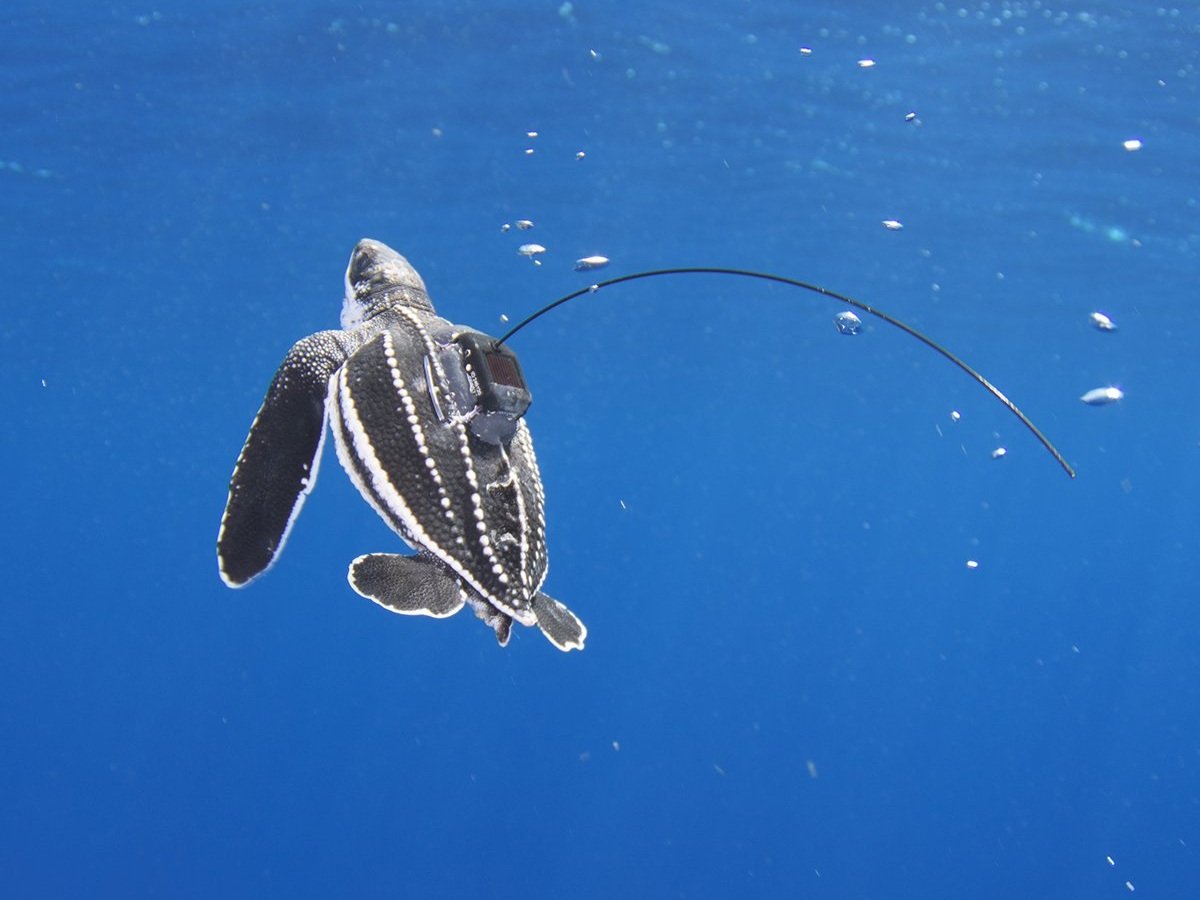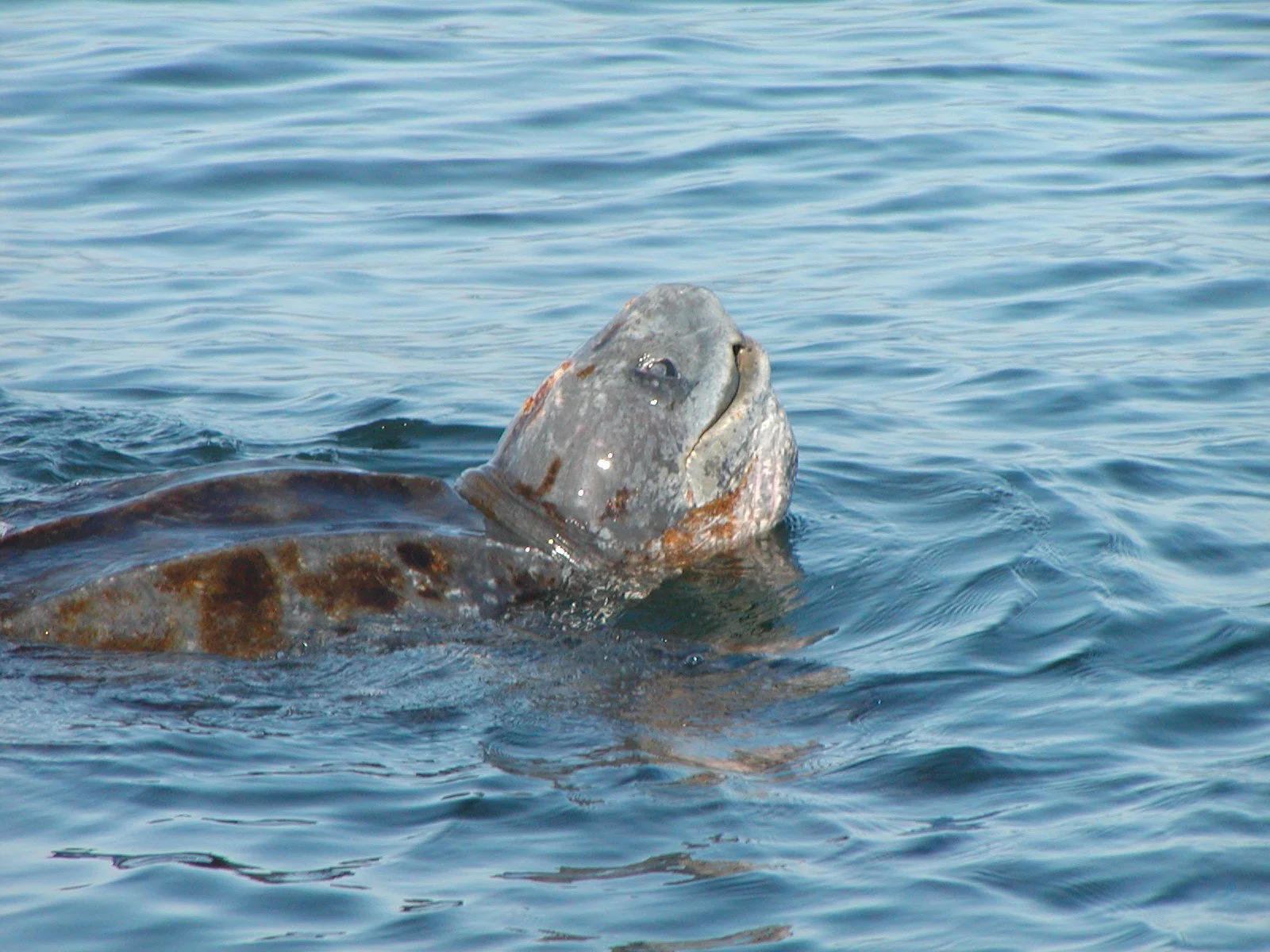Each year, the Upwell and NOAA Fisheries team conduct aerial and vessel-based surveys for leatherback sea turtles off the US West Coast. The data from these surveys can be put into action to protect the critically endangered West Pacific leatherback population. During August and September of 2024 the collaborative team documented their efforts in an engaging web series called Looking for Leatherbacks.
Taking to the Sky to Find Leatherbacks in New Zealand
Expanding efforts to monitor critically endangered West Pacific leatherbacks, Upwell is teaming up with Monash University in Australia and New Zealand’s Department of Conservation and National Institute of Water and Atmospheric Research, and our partners at NOAA to design and conduct aerial surveys for leatherback abundance in the Bay of Plenty. New Zealand has become a focus of attention for leatherback conservation and bycatch prevention, and these surveys will provide critical data to support these growing efforts.
Partnerships to Save Cold-Stunned Sea Turtles in California
New Collaboration to Tag Juvenile Leatherbacks in Thailand
In early April, Upwell partnered with the Phuket Marine Biological Center (PMBC) in Thailand to tag and release 11 juvenile leatherbacks, each around 1-year old. This release was the latest collaboration in Upwell’s Lost Years Initiative, an international effort to collect data on the movements and behaviors of early stage juvenile turtles.
Diving Into Underwater Photography with Nuno Vasco Rodrigues
Nuno Vasco Rodrigues is a Marine Biologist and researcher at MARE IPLeiria. He was named “Conservation Photographer of the Year” by Ocean Geographic Society in 2021. For the past three years, Nuno has photographed Upwell’s work tagging juvenile loggerhead turtles in the Azores Archipelago in partnership with the COSTA Project and the University of the Azores, which is part of Upwell’s Lost Years Initiative. Nuno took some time to chat with us about the highlights and challenges of documenting sea turtle releases underwater.
A Deep-Dive into the Annual International Sea Turtle Symposium
In March of 2024, sea turtle experts from around the world met in Pattaya, Thailand for the annual International Sea Turtle Symposium. This was Anna Ortega’s third time attending as an Upwell researcher, and she wrote this blog to share an inside look at the conference and why it’s such a special event for the sea turtle community.
MPAs, Swimways, and Other Protections for Migratory Marine Species
Traditional conservation models identify geographic locations with important habitat and create management plans restricting human activity to conserve them. These protected areas are often important nesting, breeding, or foraging areas for highly migratory sea turtle species like leatherbacks and loggerheads, but the protections end when the turtles inevitably continue migrating. So, how can we protect sea turtles throughout their ocean habitat?
Exploring the Potential of Passive Acoustic Monitoring for Leatherbacks in the Northwest Atlantic
AMP, Migravías, y otras formas de proteger a las especies marinas migratorias
A principios de 2024, la ONU publicó el primer Reporte del Estatus de las Especies Migratorias, lo cual indicó que un 50% de las especies migratorias del mundo están en declive. Esta noticia, aunque devastadora, no es sorprendente. La protección de las especies migratorias es particularmente difícil dado al hecho de que siempre están en movimiento y la mayoría de métodos de conservación suelen ser fijos.
Researcher Interview: Analyzing Data from Microsatellite Tags on Juvenile Sea Turtles
With a team of collaborators, we tested new specially-designed prototypes of Lotek microsatellite tags on 160 juvenile sea turtles of four species in the North Atlantic. The data from these tags was published in a new article, "Novel Microsatellite Tags Hold Promise for Illuminating the Lost Years in Four Sea Turtle Species." We sat down with lead-author Tony Candela to talk about this article, his process as lead-author, and the important implications of these findings for the bio-logging community.









